Ford Puma vs Vauxhall Grandland – Differences & prices compared
Compare performance, boot space, consumption and price in one view.
Find out now: which car is the better choice for you – Ford Puma or Vauxhall Grandland?
The Ford Puma (SUV) comes with a Petrol MHEV or Electric engine and Manuel or Automatic transmission. In comparison, the Vauxhall Grandland (SUV) features a Electric or Petrol MHEV engine with Automatic transmission.
When it comes to boot capacity, the Ford Puma offers 523 L, while the Vauxhall Grandland provides 550 L – depending on how much space you need. If you’re looking for more power, decide whether the 168 HP of the Ford Puma or the 325 HP of the Vauxhall Grandland suits your needs better.
In terms of consumption, the values are 13.10 kWh5.40 L per 100 km for the Ford Puma, and 16.90 kWh5.50 L for the Vauxhall Grandland.
Price-wise, the Ford Puma starts at 24800 £, while the Vauxhall Grandland is available from 31200 £. Compare all the details and find out which model fits your lifestyle best!
In the highly competitive compact SUV market, the Ford Puma stands out with its sporty design and engaging driving dynamics, appealing to those who prioritize performance. In contrast, the Opel Grandland offers a more spacious interior and a focus on comfort, making it a strong choice for families and long-distance travelers. Ultimately, the decision between the two may come down to whether buyers prefer the Puma's athleticism or the Grandland's practicality.
Ford Puma
The Ford Puma presents itself as a stylish compact SUV with a distinctive design that combines practicality with a dynamic driving experience. Its sleek lines and sporty aesthetics make it stand out on the road, while the interior offers a comfortable and tech-savvy environment. With an emphasis on efficiency and a smooth drive, the Ford Puma is well-suited for both urban commutes and countryside adventures.
details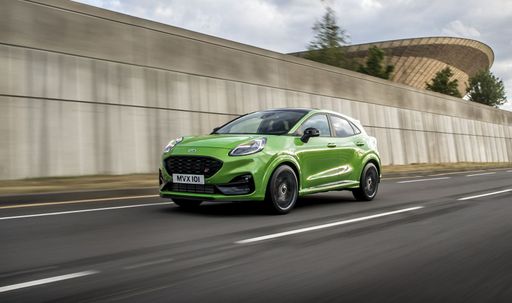 @ puma.fordpresskits.com
@ puma.fordpresskits.com
 @ puma.fordpresskits.com
@ puma.fordpresskits.com
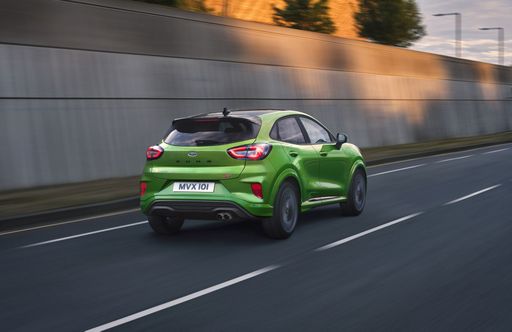 @ puma.fordpresskits.com
@ puma.fordpresskits.com
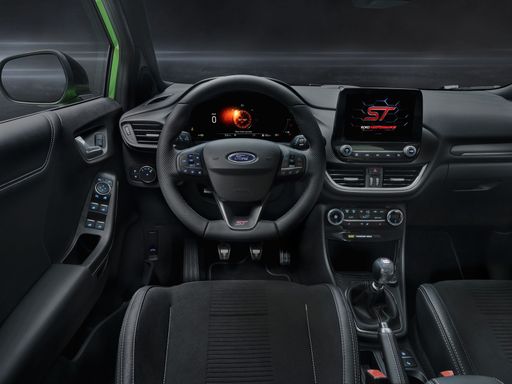 @ puma.fordpresskits.com
@ puma.fordpresskits.com
Vauxhall Grandland
The Opel Grandland offers a blend of style and practicality, making it an appealing choice for those seeking a versatile SUV. Its sleek design is complemented by a comfortable and spacious interior, providing an enjoyable driving experience for both short commutes and long journeys. Advanced technology and safety features enhance the overall appeal, ensuring drivers feel confident and connected on the road.
details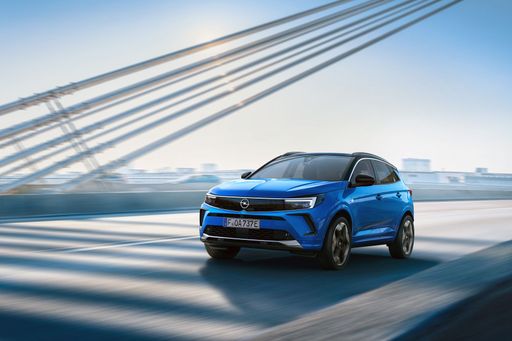 @ media.stellantis.com
@ media.stellantis.com
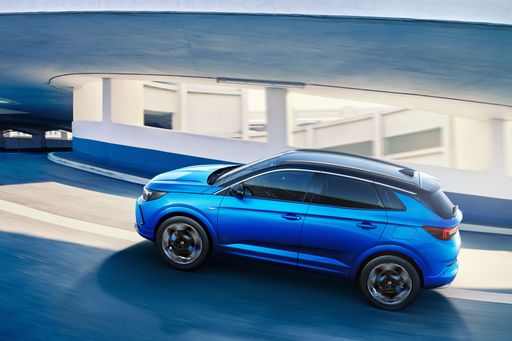 @ media.stellantis.com
@ media.stellantis.com
 @ media.stellantis.com
@ media.stellantis.com
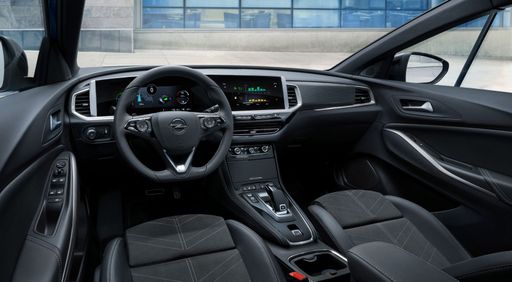 @ media.stellantis.com
@ media.stellantis.com
Introduction: A Clash of Titans
In the highly competitive SUV market, the Ford Puma and Opel Grandland stand out with their unique technological features, performance metrics, and innovations. Both vehicles offer versatility and practicality, wrapping them in a sleek design. This article delves into the technical aspects of both cars, highlighting their strengths and potential weaknesses.
Overview of Specifications
The Ford Puma is compact yet sporty, with an array of engine options ranging from petrol mild-hybrid (MHEV) to fully electric variants. In contrast, the Opel Grandland boasts a robust lineup that includes petrol hybrids, plug-in hybrids, and electric models, catering to a wider audience concerned with environmental impact.
Engine Power and Efficiency
The Ford Puma offers five power options that range from 125 HP to an impressive 168 HP, all powered by a 999 cm³ three-cylinder engine. With a maximum torque of up to 290 Nm, the Puma delivers a satisfying driving experience. Fuel consumption hovers around 5.4 to 6 L/100 km, depending on the variant.
On the other hand, the Opel Grandland steps it up with a power range from 136 HP to 213 HP, and it can also deliver torque figures as high as 350 Nm. Its fuel efficiency is slightly less impressive, at 6.4 L/100 km for gasoline engines, but it has the advantage of plug-in hybrid options that provide ultra-low emissions. The electric variants boast an electric range of up to 585 km, making them a great choice for environmentally conscious consumers.
Transmission and Driving Experience
The Puma's transmission lineup includes both manual and dual-clutch automatic options, allowing drivers to choose their preferred driving style. It features a front-wheel-drive configuration, which contributes to its agility and responsiveness in urban settings.
In contrast, the Opel Grandland utilizes automatic transmissions exclusively, emphasizing convenience and easy handling. With its focus on a refined driving experience, the Grandland delivers impressive acceleration, with the quickest variant achieving 0-100 km/h in just 7.8 seconds.
Interior Comfort and Technology
When stepping inside, the Ford Puma impresses with its spaciousness, accommodating up to five passengers comfortably. The trunk capacity ranges from 456 to 523 liters, making it practical for road trips or daily errands. Modern touches, including advanced infotainment systems and driver-assistance technologies, enhance the driving experience.
The Opel Grandland shines with a more spacious trunk capacity of 550 liters, perfect for drivers who prioritize cargo space. Additionally, the Grandland offers advanced technological features like a digital cockpit, infotainment options, and safety systems that enhance both comfort and security.
Design and Dimensions
In terms of dimensions, the Ford Puma measures between 4186 mm and 4226 mm in length, while the Opel Grandland stands significantly larger at 4650 mm. The width of the Puma is 1805 mm, whereas the Grandland offers a broader stance at 1934 mm. The height of the Puma is slightly lower at around 1550 mm, which contributes to its sporty aesthetics, while the Grandland’s height of 1665 mm provides a more commanding view of the road.
Conclusion: Which SUV Reigns Supreme?
The choice between the Ford Puma and Opel Grandland ultimately comes down to buyers’ preferences and needs. The Puma offers a sportier drive with better agility and multiple powertrain options, catering to urban dwellers. Meanwhile, the Grandland prioritizes space, advanced tech, and hybrid capabilities, appealing to families and eco-conscious consumers.
Both vehicles are excellent contenders in the SUV market; selecting one over the other depends on factors like performance, design, and technological sophistication. Whether you crave an engaging driving experience or a family-friendly vehicle packed with features, both the Ford Puma and Opel Grandland deserve serious consideration.

|

|
|
|
|
Costs and Consumption |
|
|---|---|
|
Price
24800 - 36300 £
|
Price
31200 - 51400 £
|
|
Consumption L/100km
5.4 - 6 L
|
Consumption L/100km
5.50 L
|
|
Consumption kWh/100km
13.1 - 13.7 kWh
|
Consumption kWh/100km
16.9 - 18 kWh
|
|
Electric Range
364 - 376 km
|
Electric Range
483 - 523 km
|
|
Battery Capacity
43 kWh
|
Battery Capacity
-
|
|
co2
0 - 136 g/km
|
co2
0 - 124 g/km
|
|
Fuel tank capacity
42 L
|
Fuel tank capacity
55 L
|
Dimensions and Body |
|
|---|---|
|
Body Type
SUV
|
Body Type
SUV
|
|
Seats
5
|
Seats
5
|
|
Doors
5
|
Doors
5
|
|
Curb weight
1316 - 1563 kg
|
Curb weight
1600 - 2325 kg
|
|
Trunk capacity
456 - 523 L
|
Trunk capacity
485 - 550 L
|
|
Length
4186 - 4226 mm
|
Length
4650 mm
|
|
Width
1805 mm
|
Width
1934 mm
|
|
Height
1550 - 1555 mm
|
Height
1665 mm
|
|
Payload
367 - 469 kg
|
Payload
425 - 570 kg
|
Engine and Performance |
|
|---|---|
|
Engine Type
Petrol MHEV, Electric
|
Engine Type
Electric, Petrol MHEV
|
|
Transmission
Manuel, Automatic
|
Transmission
Automatic
|
|
Transmission Detail
Manual Gearbox, Dual-Clutch Automatic, Reduction Gearbox
|
Transmission Detail
Dual-Clutch Automatic, Reduction Gearbox
|
|
Drive Type
Front-Wheel Drive
|
Drive Type
Front-Wheel Drive, All-Wheel Drive
|
|
Power HP
125 - 168 HP
|
Power HP
145 - 325 HP
|
|
Acceleration 0-100km/h
7.4 - 9.8 s
|
Acceleration 0-100km/h
6.1 - 10.2 s
|
|
Max Speed
160 - 210 km/h
|
Max Speed
170 - 202 km/h
|
|
Torque
170 - 290 Nm
|
Torque
230 - 509 Nm
|
|
Number of Cylinders
3
|
Number of Cylinders
3
|
|
Power kW
92 - 124 kW
|
Power kW
107 - 239 kW
|
|
Engine capacity
999 cm3
|
Engine capacity
1199 cm3
|
General |
|
|---|---|
|
Model Year
2024 - 2025
|
Model Year
2024 - 2025
|
|
CO2 Efficiency Class
D, E, A
|
CO2 Efficiency Class
A, D
|
|
Brand
Ford
|
Brand
Vauxhall
|
Ford Puma
A Glimpse into the Ford Puma: Fusing Style with Innovation
The Ford Puma stands as a testament to modern engineering fused with style. This compact SUV is not just about aesthetics but brings to the table an array of technical innovations, topped with the reliability and performance Ford is known for. Let's delve into the technical specifics and innovative features that make the Ford Puma a stellar choice for any car enthusiast.
Powertrains and Performance
The Ford Puma is offered with a range of powertrains designed to deliver optimal performance whilst minimising fuel consumption. At the heart of this compact SUV is the 1.0 EcoBoost Hybrid engine, available in both 125 PS and 155 PS variants. This engine is a marvel of engineering, optimised to deliver power efficiently with a remarkable fuel consumption ranging from 5.4 to 5.7 L/100km for manual versions, and slightly higher for the automated variants.
The top-end 1.5 EcoBoost ST variant takes performance up a notch, providing a robust 200 PS that propels the Puma from 0 to 100 km/h in just 6.7 seconds. This variant is perfect for those who prioritise performance and exhilaration in their driving experience.
Mild-Hybrid Technology
The Puma's mild-hybrid technology plays a significant role in enhancing fuel efficiency and reducing emissions. By utilising a belt-driven integrated starter/generator, the Puma recovers energy usually lost during braking, storing it in a 48-volt lithium-ion battery. This stored energy is then used to assist the engine, providing a boost during acceleration and smoothing out the stop-start technology, ultimately leading to enhanced fuel efficiency.
Design and Comfort
The Ford Puma does not compromise on style and comfort with its ergonomic and stylish design. The SUV is available in multiple trims including the ST-Line, Titanium, and the luxurious Vignale editions, each offering unique aesthetic and technological enhancements. These trim levels provide varied offerings in terms of both exterior styling and interior comfort, ensuring there's a Puma that meets every personal preference.
Inside, the Puma offers a driver-focused cockpit with advanced technological integrations such as the SYNC 3 infotainment system, providing seamless connectivity and intuitive control of the vehicle's numerous technological features.
Safety and Technology
Safety remains paramount, and the Ford Puma is equipped with the latest security and technology features. It boasts the Ford Co-Pilot360 suite which includes adaptive cruise control, pre-collision assist with autonomous emergency braking, and lane-keeping assist, enabling a safer driving experience on both city roads and highways.
Versatility and Practicality
Beyond performance and safety, the Ford Puma shines in its versatility. With a boot capacity of 456 litres, it offers ample space for all sorts of adventures, whether you're heading on a family trip or loading sports equipment. Its innovative MegaBox is an extra storage solution, providing additional space below the boot floor.
The Puma's agile handling, paired with its compact dimensions—spanning a length of 4186 to 4266 mm and a width of 1805 mm—makes it an ideal choice for urban commuting and beyond.
Conclusion
In conclusion, the Ford Puma beautifully blends practical features with cutting-edge technology, offering a package that appeals to both the tech-savvy driver and those seeking comfort and reliability. Its range of innovative features, powerful yet efficient engine options, and a design that is both functional and stylish make it a frontrunner in the compact SUV market.
Whether you're drawn by the efficient mild-hybrid engines or the robust performance of the ST variant, the Ford Puma represents a modern driving experience where innovation meets everyday usability.
Vauxhall Grandland
The Opel Grandland: A Modern Marvel in the SUV World
The Opel Grandland boldly asserts itself in the competitive SUV market, blending sleek design with advanced technology and efficient performance. Whether you are cruising through the city or exploring the countryside, this SUV promises a drive like no other. Let's delve into its impressive features and the innovations that set it apart.
Engine Options and Performance
The Opel Grandland comes with a variety of engine options catering to different driving preferences. The selection includes traditional petrol engines and innovative hybrid alternatives. The petrol variants feature a 1.2-litre turbocharged engine, available with manual or automatic transmission, both providing 130 PS. The innovative Hybrid 48V versions elevate the power to 136 PS, while maintaining outstanding fuel efficiency with a consumption of just 5.7 L/100km.
For those seeking a more eco-friendly drive, the plug-in hybrid options deliver exceptional performance with a 1.6-litre turbo engine, offering up to 224 PS. Remarkably, the GSe Plug-in Hybrid version delivers a formidable 300 PS with an electric range of up to 55 km, all while keeping CO2 emissions exceptionally low.
Sophisticated Design and Interior
The Opel Grandland is not just about power and efficiency; it is also a testament to elegant design. Its exterior features a bold front grille and sleek lines, embodying a modern aesthetic. The interior is equally impressive, with premium materials and a driver-focused layout that enhances the overall driving experience.
The spacious cabin ensures comfort for all passengers, while the generous boot space, ranging from 390 to 514 litres, caters to various storage needs. Additionally, its optimal dimensions—4477 mm in length, 1906 mm in width, and 1609 mm in height—strike a fine balance between style and practicality.
Innovations in Technology
Cutting-edge technology is at the heart of the Opel Grandland's appeal. Featuring a choice of manual, automatic, and advanced dual-clutch transmissions, this SUV adapts seamlessly to your driving style. The hybrid versions are particularly noteworthy, equipped with intelligent energy management systems that optimise performance and efficiency.
Moreover, advanced safety features and driver assistance systems, such as adaptive cruise control, lane departure warning, and automatic emergency braking, underscore Opel's commitment to safety and convenience. The infotainment system, intuitive and user-friendly, ensures connectivity and entertainment on the go.
Cost and Efficiency
The Opel Grandland presents a compelling case for cost-efficiency. With prices ranging from €32,630 to €59,000 and monthly costs between €997 and €1316, it offers outstanding value for money. The cost per kilometre, from 39.9 to 52.6 cents, reflects its economical nature, particularly when considering its low fuel and energy consumption figures.
Overall, the Opel Grandland is more than just an SUV; it is a reflection of modern automotive innovation, combining style, performance, and advanced technology in a harmonious package. Embrace the future of driving with this exceptional vehicle that truly lives up to its name.
Which drive types are available for the Ford Puma?
Available as Front-Wheel Drive.
The prices and data displayed are estimates based on German list prices and may vary by country. This information is not legally binding.
